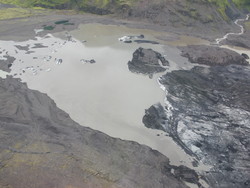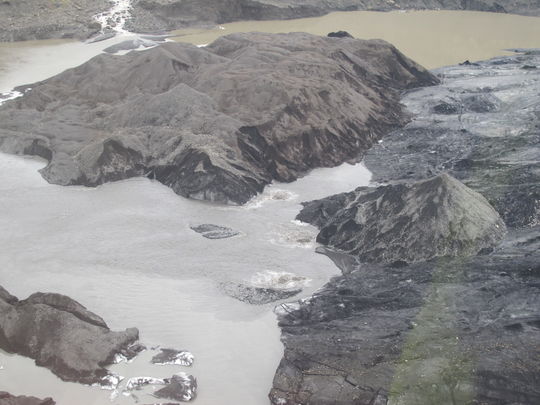Small glacial outburst floods around Mýrdalsjökull
Floodwater continues to drain from geothermal sources beneath Mýrdalsjökull into the rivers Múlakvísl and Jökulsá á Sólheimasandi. Conductivity levels in both rivers remain higher-than-normal, but the latest measurements show a slight decrease. Additionally, the discharge of both rivers is lower than earlier in the week.
The photo above was taken in the evening of 8 July 2014. It shows the new bridge over Múlakvísl (south-east of Mýrdalsjökull). In recent days a small flood was coming out of Kötlujökull and went down Múlakvísl.
At Sólheimajökull, geothermal gases continue to be released from the floodwater as it emerges from the glacier. Measurements late on 9 July showed that gas levels were dangerously high at edge of Sólheimajökull, close to where floodwater is draining. We urge people not to visit the western side of Sólheimajökull where floodwater is draining from the ice. The mixture of geothermal gases in this area could cause eye irritations and breathing problems. Note that some of the measured gases are odourless and colourless, making it difficult for humans to detect their presence.
The photo above was taken out of a helicopter in the evening of 8. July 2014. It shows the lagoon of Sólheimajökull (south of Mýrdalsjökull). The dark water is floodwater that comes out underneath the glacier. The area around this outlet can be dangerous due to gas emissions and the possibility of a sudden larger flood without any warning.
Shallow earthquake activity with the Katla caldera continues to occur, but the seismicity rate is not presently increasing. It is likely that the ongoing seismicity is associated with geothermal activity within the Katla caldera. It should be noted that shallow seismicity within the Katla caldera occurs often during the summertime.






